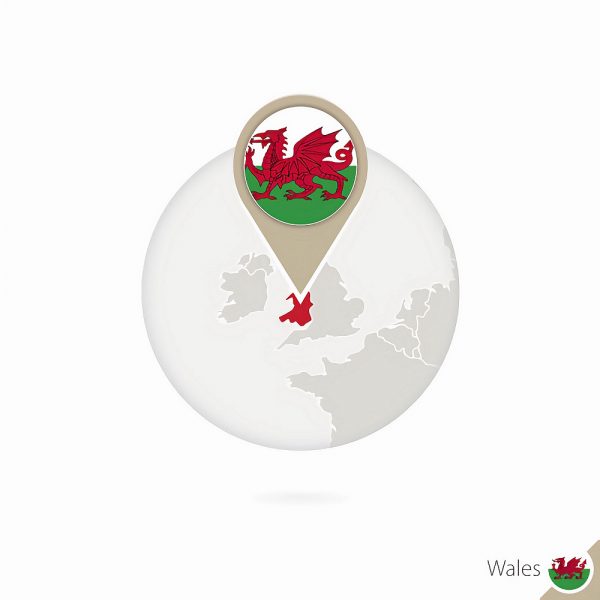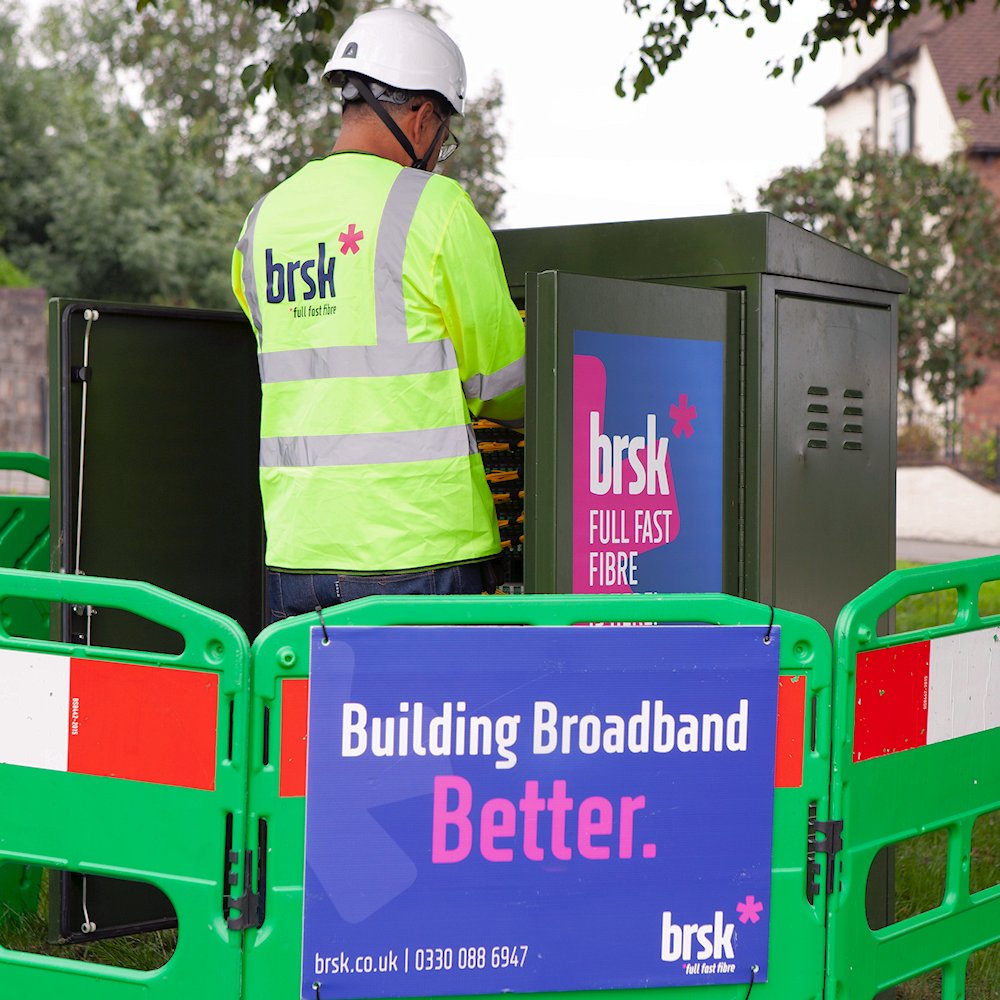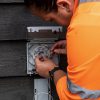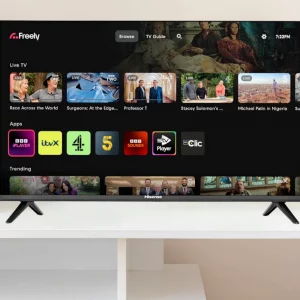Wales Infrastructure Report Wants Focus on Mobile, Not FTTP Broadband

The National Infrastructure Commission for Wales (NICW) has published a report that calls on the Welsh Government to “urgently establish” a Barrier Busting Taskforce to aid investment in broadband, but they also warn that “too much attention” has been paid to FTTP and “not enough” on improving Mobile Broadband (e.g. 5G).
According to the latest data from Thinkbroadband, just 18% of premises in Wales can today access a “full fibre” (FTTP) broadband ISP network, which rises to nearly 26% for gigabit lines (combines FTTP and Cable DOCSIS) and 95% for “superfast” (30Mbps+) speeds. Meanwhile Ofcom’s data from May 2020 found that outdoor 4G mobile coverage by all operators is 93%, but this drops to just 58% when looking at geographic coverage.
The Welsh Government’s (WG) £52.5m Phase 2 Superfast Cymru contract with BT (Openreach) currently expects to improve superfast coverage by extending FTTP to another 39,000 premises by June 2022. On top of that the £1bn Shared Rural Network (SRN) plan will also help to extend 4G and 5G geographic coverage further into rural parts of Wales by 2025/26 (target of 95%).
Meanwhile the Government’s new £5bn Gigabit Broadband (F20) programme, which previously aimed to ensure that “every [UK] home” could access a 1Gbps capable connection by the end of 2025, now only expects to achieve a “minimum” of 85% coverage by that date and has so far only committed £1.2bn of its investment pot.
Suffice to say that a connectivity gap remains and the NICW want to see it plugged. In order to do that they’ve today published their first report, complete with a full set of recommendations for the WG. But the report warns that the government is wrong to focus on “full fibre” for rural areas, where “population density is lower, demand weaker and the topography more challenging” (we’d disagree on the weaker demand point, after years of neglect poorly served rural areas often show the strongest demand for fibre).
Instead, the report (PDF) wants the WG to re-focus on improving mobile broadband for home connectivity as a “good, low cost option for business and homes in rural areas, on a permanent basis or until [FTTP] arrives.” At present only 3% of all the data carried on UK networks is carried on mobile networks, a much lower proportion than elsewhere in Europe.
NICW’s Key Proposal
In order to achieve rapid advances the proposed ‘barrier busting’ taskforce, led by a senior Welsh Government official and working with local authorities and other stakeholders, would be responsible for implementing many of the changes recommended. These include:
• Discussing ambitious targets for 4G and 5G ‘home’ mobile infrastructure with the mobile industry. This would include the offer of Welsh Government funds to support mobile infrastructure under a new, more flexible, ‘Gigabit Cymru’ programme.
• Serious consideration of planning rules that are more favourable towards mobile infrastructure than those seen elsewhere in the UK.
• Not, at this stage, spending more than £3,500 to connect individual households to a fibre network and simplifying the use of vouchers for this purpose.
• Investing heavily to improve the adoption of new digital technologies where the infrastructure is already available, but only after Audit Wales has reviewed the effectiveness of the programmes that already exist.
At the time of writing we haven’t yet seen the full report, but from what we can gather it doesn’t propose any specific changes for new “planning rules” (i.e. such as those that might go further than those being developed elsewhere in the UK – example). Instead this would form part of any future discussions between the WG and operators.
John Lloyd Jones OBE, Commission Chair, said:
“Digital connectivity has been vital during the COVID-19 pandemic and will continue to be an important enabler of economic development and digital service delivery.
Businesses and households stand to gain substantial economic benefits from both fibre to the home and 5G. The quality of digital communications is critical in determining where new, high growth businesses locate and where young people choose to live. They cannot afford to wait and will move to where fast, reliable broadband is available.
Yet, too many parts of Wales still lack adequate broadband connectivity and opportunities are already being lost. Achieving rapid advances will require more direction from the Welsh Government.”
We believe that any consideration toward centralising around mobile broadband connectivity for serving homes would, in our view, need to be matched with a clear performance commitment and that’s very difficult for mobile networks to do (such platforms are inherently very variable due to all sorts of issues, such as the weather and physical obstructions).
Likewise, the nature of mobile connectivity, which in rural areas tends to use smaller chunks of lower frequency spectrum (good for cost-effective network coverage, but not so much for speeds), is another issue that would be difficult to overcome without building many more masts. On the other hand, any effort to improve 4G and 5G coverage and performance should be welcomed, just not at the sacrifice of all else.
Lest we forget that you’d still need to feed those 5G masts with a good fibre optic and power supply, all of which can push up the cost. At this point we also can’t help but feel as if the NICW may be overlooking the options for Fixed Wireless Access (FWA) solutions, as well as missing an opportunity to encourage engagement with suppliers of newer Low Earth Orbit (LEO) based satellite broadband platforms. The report does in fact reference OneWeb, but concludes that it has no immediate implications for the WG.
The good thing about all this is that it will start an important conversation, which keeps broadband and mobile connectivity front and centre in the political mindset.
UPDATE 11:51am
Now that the full report is out we finally can post the full list of recommendations.
Recommendations
a. The Welsh Government should continue to engage actively with the UK Government and Building Digital UK during the development of the new Gigabit funding programme, which should be more flexible than the previous superfast programme. In particular, the Welsh Government should seek to:
i. Ensure that the tendering arrangements can accommodate the relative lack of competitive provision of FTTH infrastructure in Wales today and likely greater role to be played by Openreach in the programme. This includes tendering lots of significantly more than 3000 households.
ii. Ensure that funds can be applied to technologies which currently deliver 100 Mb/s, such as 4G and 5G home broadband services, and not only in ‘limited cases’ as the UK Government currently seems to envisage.
iii. Ensure that funds that are ‘clawed back’ under an FTTH contract can be reallocated flexibly to any scheme, rather than having to be allocated to new programmes being undertaken by the same operator. In this context ‘any scheme’ should include FTTH deployed by another operator, 4G/5G broadband deployed by mobile operators, or voucher schemes of any kind.
iv. Allow funds to be provided on condition that availability of FTTH connections to businesses is prioritised over the needs of households.
b. In doing so, the Welsh Government should assume that Wales is unlikely to obtain access to the £1.3 billion of funds which we estimate would be required to deliver fibre to every household and business in Wales and nor should it dogmatically mimic the UK Government’s commitment to FTTH. The Welsh Government should instead develop its own strategy to maximise the economic and other benefits from lower cost investments in 4G and 5G mobile infrastructure.
c. The Welsh Government should seek to encourage entry and investment by new FTTH operators in Wales, as we are now seeing elsewhere in the UK. One step in doing this is for the Welsh Government to provide all local authorities with specific guidance and direction on making ducts and other public assets available at fees which encourage their utilisation by operators and which are in accordance with the aims of the new UK Electronic Communications Code.
d. The Welsh Government should undertake a rapid review of its existing broadband voucher schemes. Having done so, it may conclude that the Access Broadband Cymru scheme is out of date and should be closed. Communication of the Welsh voucher arrangements should be simplified and improved in order to significantly improve take up (for which targets should be set). At the same time, the Government should guard against ‘voucher inflation’ which is otherwise likely to be driven by the very high costs of FTTH deployment in some parts of Wales. Awarding vouchers for many thousands of pounds per household in the next 5 years should only be considered if all feasible alternatives – including the provision through subsidised 4G or 5G home broadband connections – have been exhausted. The Welsh Government should adopt a self-imposed cap of £3400 per household, similar to that which applies under the Universal Broadband scheme, at least for the next few years.
e. The Welsh Government should replace the existing all Wales Digital Infrastructure Group with a new ‘barrier busting’ taskforce, led by a senior official, with clear objectives and deadlines in which to achieve them. The taskforce should lead the development and implementation of new guidance that is issued by the Welsh Government, including (but not limited to) that relating to the use of public assets and levy of fees for them, the implementation of a new planning regime for telecommunications (TAN19), liaison with Network Rail, Transport for Wales, the North and Mid Wales Trunk Road Agent, the South Wales Trunk Road agent, and liaison with the equivalent taskforce in the UK Government.
f. The Welsh Government should not invest funds into 5G case studies, proof of concept activities, testbeds or trials, but should instead aim to ensure that successful applications that are developed elsewhere in the world can then be adopted in Wales.
g. We make no specific proposals for new initiatives to promote the greater adoption of FTTH services when and where they become available in Wales. Instead, we recommend that Audit Wales be asked to identify and review the effectiveness of the broadband adoption programmes that are already being undertaken in Wales, and to identify best practice outside of Wales, and make recommendations to the Welsh Government. Existing activities which are ineffective should be ended and resources reallocated. The Welsh Government should also seek to liaise closely with the UK Government’s new Gigabit Digital Take-up Advisory Group.
h. We recommend that the Welsh Government Chief Digital Officer be asked to contribute to the work of Audit Wales by providing evidence on the adoption of broadband technologies by public authorities in Wales.
i. The planning regime for telecommunication in Wales should be brought into line with that currently being proposed for England (and likely to be replicated in Scotland) as a matter of urgency. This should be accompanied by the wholesale revision of the TAN19 guidance to local authorities, as well as revisions to the Code of Practice on Mobile Phone Network Development, both of which are now over 15 years old.
j. We recommend the Welsh Government undertake a small project to obtain better data on existing levels of mobile coverage and performance in Wales. This should be used to inform data already produced by Ofcom and the assumptions made by both the Welsh and UK Governments when developing policy or enforcing targets.
k. We recommend that the Welsh Government explore, with industry and in parallel with the implementation of recommendation (i), the extent to which further 4G coverage and accelerated 5G delivery could be achieved in Wales within the next 5 years, likely using the 700 MHz spectrum that will be available from 2021, if:
i. The Welsh Government were to adopt further amendments to the planning regime in Wales above and beyond those currently proposed by the UK Government for England, to further facilitate the deployment of mobile infrastructure.
ii. The Welsh Government were to provide additional public funding, above and beyond that in the existing SRN agreement, in order to further extend mobile coverage in some parts of Wales. Such funds could be reallocated from the share of the £5 billion Gigabit funding programme which the Welsh Government expects to obtain from the UK Government (and could represent a significant proportion of that allocation).
l. We recommend that the Welsh Government ask the UK Government to consider introducing 5G coverage and performance targets (alongside those already adopted for 4G) into the existing Shared Rural Network arrangements. If this is not supported, and if progress is made with the UK mobile operators, then the Welsh Government should pursue a separate agreement with the mobile operators which would incorporate such targets.
m. We recommend that the barrier busting taskforce be asked to assist Mobile UK and/or mobile operators in their discussions with Highways Authorities and Network Rail with a view to resolving the issues which we list in paragraph 342 of this report.
n. We recommend that the Welsh Government engage directly with the Home Office to determine whether and the extent to which delays in the delivery of ESN affect coverage in Wales and to satisfy itself that they will be resolved or to identify actions which the Welsh Government can take to assist.
On the point about ensuring that “funds that are ‘clawed back’ under an FTTH contract can be reallocated flexibly to any scheme, rather than having to be allocated to new programmes being undertaken by the same operator,” it should be noted that this was also possible under the original BDUK Superfast Broadband programme, but you had to wait until the very end of the contract (often 7 years). BT allowed an optional exception, that enabled some local authorities to access part of the early gainshare money earlier than that, but only so longer as the extension went to BT (some opted to do this, while others opted to wait).
Mark is a professional technology writer, IT consultant and computer engineer from Dorset (England), he also founded ISPreview in 1999 and enjoys analysing the latest telecoms and broadband developments. Find me on X (Twitter), Mastodon, Facebook and Linkedin.
« Perth and Kinross Council Award £2m Local Full Fibre Contract
Latest UK ISP News
- FTTP (5543)
- BT (3518)
- Politics (2543)
- Openreach (2301)
- Business (2268)
- Building Digital UK (2248)
- FTTC (2046)
- Mobile Broadband (1979)
- Statistics (1790)
- 4G (1670)
- Virgin Media (1625)
- Ofcom Regulation (1467)
- Fibre Optic (1396)
- Wireless Internet (1393)
- FTTH (1382)


























































Strong mobile infrastructure also helps with tourism.
In 2018, the Welsh Government said that it provided for 6% of the economy and 8% of employment.
So it is worthwhile to improve mobile connectivity for both locals and tourists alike.
I wonder how these plans might impact the decommissioning of the PSTN; with BT recently announcing that they are developing plans to decommission 4,600/5,600 exchanges, there still seems to be a lack of insight into how this will work.
I am slightly surprised there appears to be no strong headline position on “Climate Change”, and trade-offs in appropriate infrastructure technology. Also one of the critical infrastructure issues has always been backhaul in Wales – both for fixed and wireless – and attempts to provide Open Access Infrastructure as a potential remedy. But good to know that we may get a revitalised approach to modern infrastructure.
“Ensure that funds can be applied to technologies which currently deliver 100 Mb/s, such as 4G”
What’s the average UK 4G speed? 40Mbps? Obviously that’s partially brought down by backhaul, but is it really credible that 4G could deliver 100Mbps to every house?
Sounds like they’re living in cloud cuckoo land.
Is UK average mobile speed really that high? I think that may be a commonly touted speed but not quite average, given that wireline only averages in the 70mb range.
FTTP is not viable in the small Welsh communities but mobile is. There are still huge parts of Wales that have no mobile signal at all.
I can see the need for a mixed approach to faster Internet services especially when talking about the rural/small village’s in Wales; it makes sense. Considering I live in a small welsh town just outside Wales second city it still seems that we are light years behind the curve when it comes to most things. We urgently need some real inward investment in our country with serious conversations around lack of services and the lack of infrastructure which can cope with future needs and demands. FTTP is one of the ways we can solve some of the issue we face couple with major updates to Backhaul capacity. In the remote and more rural parts of Wales surely it makes more sense to provide a mixed approach Mobile/Leo sat. /FWA for example. My thinking is really simple, if we managed to get other utilities to our community’s then how much difference is there really in sending over some Fibre?? Obviously costs, labour etc. But my point remains.
In this infrastructure reports reccomendations to focus more on mobile as opposed to FTTP., I say stop muddying the waters and to get the basics done right first. We need Full FAT Fibre as the basis, on top of which will flower all the other technologies which we crave and require. We have one Web sat LEO possibility being activated soon too so that could help plus Ellon Musks Starlink thing which may also further help reach the real remote areas.
Finally, stick to first principles and in turn to the script. Complete the already planned 250-300 connected towns/villages first! Update our backhaul capacity too lastly look at infill with Mobile/FWA.
I’m sure they know where build cost that would exceeds the stated max. £/ premises passes for FTTP already, so why not look at mobile for those areas. In my humble opinion switching stratagies now to focus on mobile as opposed to Full Fibre is not the answer. The last thing we need is for another M4 bypass failed project. There is definitely a place for mobile but FTTP should be the primary focus on infrastructure investment in this great country of mine Wales.
I have 4G providing broadband and it works fine most of the time, 30-50mb compared to BT which was less than 1mb.
When the tourists turn up though it goes down to about 2mb and it also has more outages. They will have to seriously sort out the capacity if it is to be a viable alternative to fibre